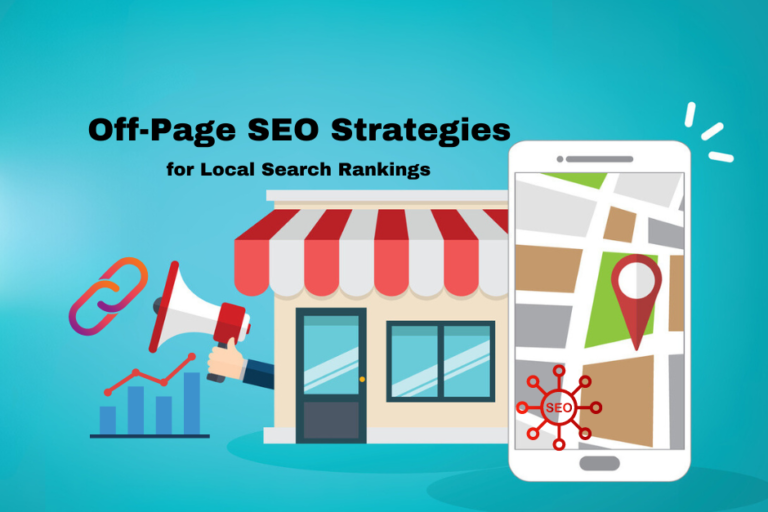How to Do Local SEO – Step by Step Guide
In today’s competitive digital landscape, local SEO has emerged as a critical strategy for businesses that want to attract customers in their geographic area. Unlike traditional SEO, which focuses on improving your website’s visibility on a national or global scale, local SEO hones in on optimizing your online presence to attract more business from relevant local searches. Think of it as ensuring your business is the top choice when someone nearby searches for the services or products you offer.
Benefits of Implementing Local SEO
- Better Online Visibility: Your business gets a spotlight on search engines like Google, especially in the coveted “3-pack” of local results.
- Targeted Traffic: Local SEO drives traffic that is more likely to convert into paying customers because these visitors are specifically searching for a local service or product.
- Enhanced Brand Awareness: As your business consistently appears in local searches, it becomes more recognizable, building trust and familiarity among potential customers.
- Competitive Edge: Many local businesses overlook the importance of local SEO. By investing in it, you can gain a significant edge over competitors who are not optimizing for local searches.
- Improved Customer Experience: Local SEO involves ensuring that your business information is accurate and consistent across the web, making it easier for customers to find and contact you.
In this step-by-step guide, we’ll explore how to do local SEO using the principles of Semantic/Holistic SEO by Koray Tuğberk GÜBÜR. We’ll cover everything from optimizing your Google My Business profile to building local citations and creating locally relevant content. Let’s dive into the specifics of how to get your business noticed in local search results.
Why Local SEO is Essential
Incorporating local SEO into your digital marketing strategy is not just a nice-to-have; it’s a necessity in today’s digital age. By optimizing your online presence for local search, you can increase your visibility, attract more high-intent customers, and build a strong, credible brand in your community.
Local SEO is not just a buzzword; it’s a crucial strategy for businesses of all sizes. Here’s why local SEO is indispensable for your business:

1. Visibility in Local Searches
When potential customers search for services or products that you offer, they often include their location in the search query, such as “coffee shop near me” or “best Italian restaurant in Sacramento.” By optimizing your local SEO, you ensure that your business appears in these local search results, increasing your chances of being found by people who are ready to make a purchase.
2. Higher Conversion Rates
Local searches typically come with high intent. Users who search for local businesses are often ready to make a purchase, visit a store, or book a service. According to Google, 76% of people who conduct a local search on their smartphone visit a business within 24 hours, and 28% of those searches result in a purchase. By appearing in local searches, you tap into this high-conversion traffic.
3. Cost-Effective Marketing
Traditional advertising methods, such as print ads or billboards, can be expensive and difficult to measure. Local SEO, on the other hand, is a cost-effective way to market your business. Optimizing your website and online presence for local search can deliver long-term results without the ongoing costs associated with traditional advertising.
4. Builds Trust and Credibility
When your business consistently appears in local search results, it builds trust and credibility among potential customers. People are more likely to trust a business that shows up in local searches and has positive reviews. Additionally, being listed in reputable online directories and having a verified Google My Business profile enhances your credibility.
5. Engagement with the Local Community
Local SEO allows you to engage more effectively with your community. By optimizing for local search, you can ensure that your business is part of the local conversation. Whether it’s participating in local events, collaborating with other businesses, or supporting community initiatives, local SEO helps you build stronger ties with your local audience.
6. Mobile Search Optimization
With the increasing use of smartphones, more people are performing searches on the go. Local SEO ensures that your business is optimized for mobile searches, making it easier for potential customers to find you when they’re out and about. This includes making sure your website is mobile-friendly and that your business information is easily accessible.
7. Competitive Advantage
Many businesses, especially small and medium-sized ones, underestimate the power of local SEO. By investing time and resources into optimizing your local SEO, you can gain a significant competitive advantage over those who neglect it. Appearing in local search results can set you apart from competitors and attract more customers to your business.
Connecting with Local Customers
Local SEO is a powerful tool for connecting with potential customers in your area. Here’s how it helps you engage with and attract your local audience:

1. Enhanced Local Listings When you optimize your local SEO, your business appears in local listings on search engines like Google. These listings provide potential customers with crucial information, such as your business name, address, phone number, hours of operation, and even customer reviews. This makes it easy for customers to find and contact you.
2. Google My Business Optimization A well-optimized Google My Business (GMB) profile is central to local SEO. By claiming and verifying your GMB listing, you ensure that your business appears in Google’s local pack, Google Maps, and organic search results. A complete and accurate GMB profile helps potential customers quickly get the information they need and increases the likelihood of them choosing your business.
3. Local Reviews and Ratings Customer reviews and ratings are a key component of local SEO. Positive reviews not only enhance your online reputation but also influence potential customers’ decisions. Encouraging satisfied customers to leave reviews on platforms like Google, Yelp, and Facebook can significantly impact your local search rankings and attract more customers.
4. Localized Content Creation Creating content that is relevant to your local audience helps you connect with them on a deeper level. This can include blog posts about local events, news, and issues, as well as guides and tips related to your industry and location. Localized content demonstrates your involvement in the community and addresses the specific needs and interests of your local customers.
5. Local Keywords and On-Page SEO Incorporating local keywords into your website content and meta tags is essential for local SEO. This includes using keywords that reflect your location and the services or products you offer. For example, a bakery in Sacramento might use keywords like “best bakery in Sacramento” or “Sacramento custom cakes.” This helps search engines understand your business’s relevance to local searches and improves your visibility in local results.
6. Building Local Citations Local citations are mentions of your business on other websites, such as online directories, social media platforms, and local business listings. Consistent and accurate citations across these platforms enhance your local SEO efforts by reinforcing your business’s legitimacy and helping search engines confirm your location and contact details.
7. Engaging with Local Social Media Social media platforms are a valuable tool for connecting with local customers. By actively engaging with your audience on platforms like Facebook, Instagram, and Twitter, you can build a loyal local following. Sharing local news, events, promotions, and customer stories helps humanize your brand and fosters a sense of community.
8. Utilizing Local Backlinks Backlinks from local websites, such as local news sites, blogs, and business directories, can boost your local SEO. These backlinks act as endorsements from reputable local sources, increasing your website’s authority and improving your local search rankings. Collaborating with local influencers and bloggers can also help you gain valuable local backlinks.
9. Participating in Local Events Participating in and sponsoring local events can provide both offline and online benefits for your business. Events offer opportunities to engage with potential customers face-to-face, while online mentions of your participation (on the event’s website, social media, and local news coverage) contribute to your local SEO efforts.
Step-by-Step Local SEO Solutions
Implementing local SEO can seem daunting, but breaking it down into manageable steps makes the process straightforward and achievable. In this section, we’ll guide you through detailed, actionable steps to optimize your local SEO. From setting up your Google My Business profile to building local citations and creating localized content, we’ll cover everything you need to boost your visibility and connect with local customers effectively.

1. Optimize Your Google Business Profile
Your Google Business Profile (formerly Google My Business) is a crucial component of your local SEO strategy. A well-optimized profile can significantly enhance your visibility in local search results and attract more customers. Here are the steps to create, claim, and optimize your profile:
Create or Claim Your Profile
- Visit Google Business Profile: Go to Google Business Profile and sign in with your Google account.
- Create a New Profile: If your business does not have a profile, click on “Add your business to Google” and follow the prompts to enter your business name, address, and other essential details.
- Claim an Existing Profile: If your business already has a listing, search for it on Google. If you find it, click on “Claim this business” and follow the verification process to confirm your ownership.
Optimize Your Profile
- Complete All Information: Ensure every section of your profile is filled out, including business name, address, phone number, website, hours of operation, and business category. Accurate and complete information helps potential customers and improves your local search rankings.
- Add High-Quality Photos: Upload high-resolution images of your business, including your logo, interior and exterior photos, and pictures of your products or services. Visual content attracts more views and engagements.
- Write a Compelling Description: Craft a concise, engaging description of your business, highlighting what sets you apart and including relevant keywords.
- Choose the Right Categories: Select the most appropriate categories for your business. This helps Google understand what your business offers and match you with relevant searches.
- Regular Updates: Keep your profile updated with any changes in your business hours, contact information, or services. Regular updates signal to Google that your business is active and well-maintained.
- Collect and Respond to Reviews: Encourage satisfied customers to leave reviews and respond to them promptly. Positive reviews improve your reputation and search rankings, while thoughtful responses show that you value customer feedback.
2. Leverage Local Directories
Utilizing local directories can enhance your visibility and credibility. Here’s how to make the most of them:
- Identify Relevant Directories: Find local directories specific to your industry and region. Examples include Yelp, Yellow Pages, and local Chamber of Commerce websites.
- Consistent NAP Information: Ensure your Name, Address, and Phone number (NAP) are consistent across all directories to avoid confusing search engines and potential customers.
- Complete Profiles: Fill out every detail on your directory profiles, including business hours, services offered, and links to your website and social media.
- Encourage Reviews: Ask customers to leave reviews on these directories, as positive feedback can boost your profile’s prominence.
3. Conduct Local Keyword Research
Effective local keyword research helps you understand what your local audience is searching for:
- Use Tools: Utilize keyword research tools like Google Keyword Planner, Ahrefs, or SEMrush to find local keywords relevant to your business.
- Analyze Competitors: Look at the keywords your local competitors are ranking for and consider targeting similar terms.
- Long-Tail Keywords: Focus on long-tail keywords that include your location, such as “best coffee shop in Sacramento.”
- Incorporate Keywords: Use these keywords naturally in your website content, meta descriptions, and Google Business Profile.
4. Create Locally Relevant Content
Creating content that resonates with your local audience helps build a connection and improve local SEO:
- Local News and Events: Write blog posts about local news, events, and issues relevant to your community.
- Local Guides: Create guides related to your industry that are specific to your location, such as “Top 10 Things to Do in Sacramento” if you run a travel-related business.
- Customer Stories: Share testimonials and stories from local customers to build trust and community engagement.
- Local SEO Keywords: Incorporate local keywords into your content to improve search visibility.
5. Build Local Links
Building links from local websites helps establish your business’s authority and improve local SEO:
- Local Partnerships: Collaborate with local businesses, organizations, and influencers to get backlinks from their websites.
- Sponsor Local Events: Sponsoring local events can get your business mentioned on event pages and local news sites.
- Guest Blogging: Write guest posts for local blogs and news sites to gain backlinks and reach a wider audience.
- Local Directories: Ensure your business is listed in reputable local directories.
6. Manage Online Reviews
Managing and responding to online reviews is crucial for maintaining your business’s reputation:
- Encourage Reviews: Ask satisfied customers to leave reviews on Google, Yelp, and other relevant platforms.
- Respond to Reviews: Thank customers for positive reviews and address any negative feedback professionally and promptly.
- Monitor Reviews: Regularly check review sites and respond to new reviews to show that you value customer feedback.
7. Optimize for Mobile Search
With the rise of mobile usage, optimizing your site for mobile search is essential:
- Mobile-Friendly Design: Ensure your website has a responsive design that works well on all devices.
- Fast Loading Times: Optimize your site’s loading speed to provide a better user experience.
- Easy Navigation: Make sure your site is easy to navigate on mobile devices, with clear menus and clickable buttons.
- Local Content: Ensure your local content is accessible and easy to find on mobile.
8. Use Schema Markup
Implementing local schema markup helps search engines understand your business better and enhances search visibility:
- Add Local Schema: Use schema markup to provide detailed information about your business, such as address, phone number, business hours, and services.
- Test Your Markup: Use Google’s Structured Data Testing Tool to ensure your schema markup is correctly implemented.
- Keep It Updated: Regularly update your schema markup to reflect any changes in your business information.
9. Track and Monitor Progress
Tracking and monitoring your local SEO efforts helps you understand what’s working and where improvements are needed:
- Google Analytics: Use Google Analytics to track website traffic, user behavior, and conversion rates.
- Google Search Console: Monitor your site’s search performance and identify any issues with Google Search Console.
- Local SEO Tools: Utilize local SEO tools like Moz Local, BrightLocal, or Yext to track local search rankings and citations.
- Regular Audits: Conduct regular audits of your local SEO efforts to identify areas for improvement and adjust your strategy accordingly.
Maximizing Local SEO Efforts
Implementing local SEO strategies effectively can provide a significant boost to your local search rankings. Here are additional tips and strategies to ensure you get the most out of your local SEO efforts:

- Host workshops, seminars, or classes related to your industry
- Participate in or sponsor community events and local festivals
- Conduct webinars or virtual meetups to engage with your local audience online
- Create geo-targeted Google Ads campaigns to reach local customers
- Use platforms like Facebook, Instagram, and LinkedIn to run ads targeting specific local areas
- Promote special deals and offers to your local audience through paid ads
- Use natural, conversational language in your content to match voice search queries
- Create detailed FAQ sections on your website to answer common voice search queries
- Use structured data to help search engines understand and present your content for voice search
- Use tools like Ahrefs or SEMrush to analyze the keywords your competitors are ranking for
- Look at your competitors’ review management strategies and find ways to improve yours
- Identify where your competitors are getting backlinks from and seek similar opportunities
- Conduct surveys and polls to gather feedback on customer experiences and preferences
- Regularly analyze customer reviews to identify trends and areas for improvement
- Use the insights from customer feedback to refine your services, content, and SEO strategies
- Create separate landing pages for different locations if your business serves multiple areas
- Regularly update your site with locally relevant content, such as blog posts about local events and news
- Use internal links to guide users and search engines to your most important local content
- Follow industry-leading blogs and websites to stay informed about the latest local SEO trends and updates
- Attend SEO conferences and webinars to learn from experts and network with peers
- Regularly invest time in learning and implementing new local SEO techniques and strategies
Leveraging Social Media to Boost Local SEO
Social media is a powerful tool for enhancing your local SEO efforts. By actively engaging on social media platforms, you can increase your visibility, drive traffic to your website, and build strong relationships with your local audience. Here’s how to use social media to boost your local SEO:
1. Optimize Social Media Profiles
- Consistent Information: Ensure your business name, address, and phone number (NAP) are consistent across all social media profiles.
- Local Keywords: Use local keywords in your social media bios and descriptions to improve discoverability.
- Link to Your Website: Include a link to your website on all your social media profiles to drive traffic and improve SEO.
2. Engage with Local Audiences
- Share Local Content: Post content that is relevant to your local community, such as news, events, and stories.
- Local Hashtags: Use local hashtags to increase the visibility of your posts among the local audience.
- Respond to Comments and Messages: Actively respond to comments and messages from followers to build relationships and encourage engagement.


3. Collaborate with Local Influencers
- Influencer Partnerships: Partner with local influencers to reach a broader audience and build credibility.
- Sponsored Posts and Giveaways: Collaborate on sponsored posts and local giveaways to boost engagement and attract new followers.
- Guest Takeovers: Allow local influencers to take over your social media account for a day to provide a fresh perspective and attract their followers.
4. Promote Local Events and Specials
- Event Promotion: Use social media to promote local events you’re hosting or participating in.
- Exclusive Offers: Share exclusive social media offers and discounts for your local followers.
- Live Streaming: Use live streaming features on platforms like Facebook and Instagram to broadcast events and engage with your audience in real-time.
5. Encourage User-Generated Content
- Customer Stories: Encourage customers to share their experiences with your business on social media using a specific hashtag.
- Photo Contests: Host photo contests where customers can submit pictures related to your business for a chance to win a prize.
- Feature Customer Content: Share user-generated content on your social media profiles to build community and show appreciation.

Engaging with the Local Community
Building strong relationships with local community members and businesses is essential for local SEO. Here are strategies to engage effectively with your local community:
1. Participate in Local Events
- Community Events: Attend and sponsor local community events to increase your visibility and show support for your community.
- Networking Events: Participate in local networking events to build relationships with other business owners and potential customers.
- Charity Events: Get involved in local charity events to demonstrate your commitment to the community.
2. Collaborate with Local Businesses
- Partnerships: Partner with local businesses for co-marketing opportunities, such as joint promotions and events.
- Cross-Promotions: Collaborate on cross-promotions where you and a partner business promote each other to your respective audiences.
- Local Business Groups: Join local business groups and associations to connect with other business owners and stay informed about community events.
3. Support Local Causes
- Community Initiatives: Support local causes and initiatives that resonate with your business values.
- Volunteering: Encourage your team to volunteer for local organizations and events.
- Donations: Make donations to local charities and causes to show your business’s commitment to the community.



4. Engage on Local Platforms
- Nextdoor: Use platforms like Nextdoor to connect with local residents and promote your business.
- Local Forums: Participate in local online forums and discussion boards to engage with the community.
- Community Blogs: Contribute guest posts to community blogs and local news websites to share your expertise and build local authority.
5. Host Community Events
- Workshops and Classes: Host workshops and classes that provide value to your community and showcase your expertise.
- Customer Appreciation Events: Organize events to thank your customers and build stronger relationships.
- Networking Mixers: Host networking mixers to bring together local business owners and professionals.
Conclusion
Local SEO is an essential strategy for any business looking to attract customers in their geographic area. By optimizing your online presence for local search, you can increase your visibility, drive more targeted traffic, and build a strong connection with your community. Implementing the steps and strategies outlined in this guide will help you stand out in local search results and grow your business.
Recap of Key Points
- Importance of Local SEO: Local SEO helps increase visibility, drive higher conversion rates, and build trust within the community.
- Google Business Profile Optimization: Creating, claiming, and optimizing your Google Business Profile is crucial for local SEO success.
- Leveraging Local Directories: Utilizing local directories enhances your online presence and credibility.
- Conducting Local Keyword Research: Researching and using local keywords effectively improves your search rankings.
- Creating Locally Relevant Content: Producing content that resonates with your local audience helps build a connection and improve SEO.
- Building Local Links: Acquiring backlinks from local websites boosts your search engine authority.
- Managing Online Reviews: Encouraging and responding to reviews helps build a positive reputation and improve rankings.
- Optimizing for Mobile Search: Ensuring your site is mobile-friendly is crucial for capturing local search traffic.
- Using Schema Markup: Implementing local schema markup enhances your search visibility.
- Tracking and Monitoring Progress: Regularly tracking your SEO efforts helps you stay on top of your strategy and make necessary adjustments.
- Leveraging Social Media: Using social media platforms to engage with your local audience boosts your local SEO.
- Engaging with the Local Community: Building relationships with local community members and businesses strengthens your local presence.
Next Steps
Here are some actionable steps you can take to start improving your local SEO today:
- Claim and Optimize Your Google Business Profile: Ensure your profile is complete, accurate, and regularly updated.
- List Your Business in Local Directories: Find relevant local directories and ensure your business information is consistent across all platforms.
- Conduct Local Keyword Research: Use tools to identify local keywords and incorporate them into your website content and meta descriptions.
- Create Locally Relevant Content: Write blog posts, guides, and other content that addresses the interests and needs of your local audience.
- Build Local Links: Partner with local businesses and participate in community events to gain backlinks from reputable local sources.
- Encourage Customer Reviews: Ask your satisfied customers to leave reviews on Google, Yelp, and other review platforms.
- Optimize Your Website for Mobile: Ensure your site is mobile-friendly and loads quickly on all devices.
- Implement Schema Markup: Use schema markup to provide search engines with detailed information about your business.
- Engage on Social Media: Actively participate in local online communities and use social media to promote your business and connect with local customers.
- Track Your Progress: Use tools like Google Analytics and Google Search Console to monitor your SEO efforts and make data-driven decisions.
By following these steps, you can enhance your local SEO, attract more local customers, and ultimately grow your business. Remember, local SEO is an ongoing process, and staying committed to these strategies will yield long-term benefits.






